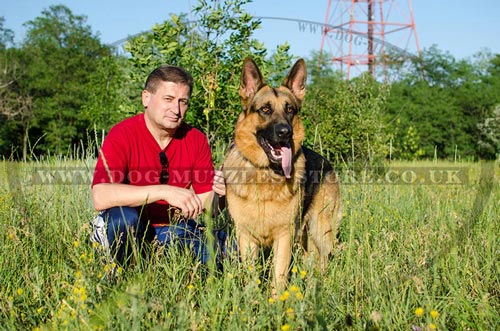Dog aggression is one of common dog behaviour problems, as it is implied by dog nature. Dog aggression may become a serious issue for any dog breed. Dog aggression problem is not an issue to resolve at once, but you may follow dog behaviour correction tips step by step and handle it.
1. Consult a Veterinarian
First of all, define the reason of dog behaviour. The best way to get success is to consult a specialist. A veterinarian will help you to find out the reasons of dog aggression from medical and professional point of view. It will help you a lot to avoid mistakes. Sometimes dog aggression is caused by medical reasons. Here the training without cure will not be useful and you may just waist your time while the problem is in progress. Consulting a vet, taking proper medical aids in combination with proper training and care will improve the situation much better in a complex.
2. Consult a Professional Trainer
After consulting a vet and finding out the medical reason of dog aggression (or the absence of such), the next step is professional dog training. Only a systematical training program, planned and consistent, will resolve the problem of dog aggression. Find a professional dog trainer or ask your veterinarian to advise an experienced specialist (professional dog trainer or dog behaviorist).
3. Reasons of Dog Aggression
Turn attention at the sources of dog aggression. Is your dog aggressive towards other dogs (dog on dog aggression), or to strangers, to children etc. Consider the situation, when a dog expresses aggression. For example, a dog may growl when it is eating or chewing a bone and somebody is coming up. Does a dog behaviour becomes aggressive to dogs, other animals or people, children? Is it an aggression to prey or an aggression of fear? The reason of dog aggression is the base for its change into a normal dog behaviour. Only having defined the reasons of dog aggression you may come over to the plan of its changing.
4. Minimize the situations, that provoke dog aggression.
Following your dog behaviour, you have defined when a dog shows aggression. Then try to forsee the situation and avoid such, that may cause dog aggression. If a dog growls while feeding, feed him on his own in his crate. If a dog growls at strangers, avoid dog walking in public places, with many people around. Or limit dog walking area to your backyard.
5. Planning Of Dog Behaviour Correction
It is important to plan your actions of dog behaviour correction. It must be created and approved by a specialist (dog trainer or dog behaviourist) and will depend on dog breed, reason and stage of aggression of your dog. Very important means in dog behaviour correction is a lot of praise and treats for dog progress in training. For example, if your dog is aggressive towards strangers, start by standing far from a strange person, on the distance far enough, on which your dog does not growl. Then praise a dog and give him a treat. Step by step make the distance to strangers less. Do not forget to use praise and treats each time dog's behaviour is positive. The same scheme is working for other situations of dog behaviour correction.
6. Be Patient, Positive and Coherent
Successful dog behavior correction is achieved with your positive mood and treatment. It is very important to keep calm and patient. A dog feels your anger and it escalates aggression instead of managing it. Moreover, never punish a dog. It will not do any good in the case of aggressive dog behaviour. Dog behaviour correction will obviously take some time. But the more positive and patient you are, the more successful it will progress. Dog growling is a warning that it is attempted to bite if the situation escalates. If you punish a dog for growling, the next time it will just bite without warning. Listen to the signals of your dog.

Dog aggression handling needs time, patience and planned actions. Keep to the plan and do not skip to another stage until your dog is ready. It may take a lot of time, but if you need the result, you should wait. Quick actions will not bring any use, but just waste your time.
In some cases the training needs to be completed with medication to manage the dog aggressive behaviour. A veterinarian should help you to decide whether it is needed in your case and what will help better.
One more problem may appear, if you cannot avoid situations, that provoke the dog aggression. For example, a dog is aggressive with children, and you have kids. In this case it may be better to find a new home for the dog.
And the worst outcome is if dog aggression cannot be cured. If your dog becomes dangerous for you or any other person, people, you may need to consider humane euthanasia.
Care of your pets and train them in time. It is better to prevent dog behaviour problems, than manage and overcome.
Related topics: